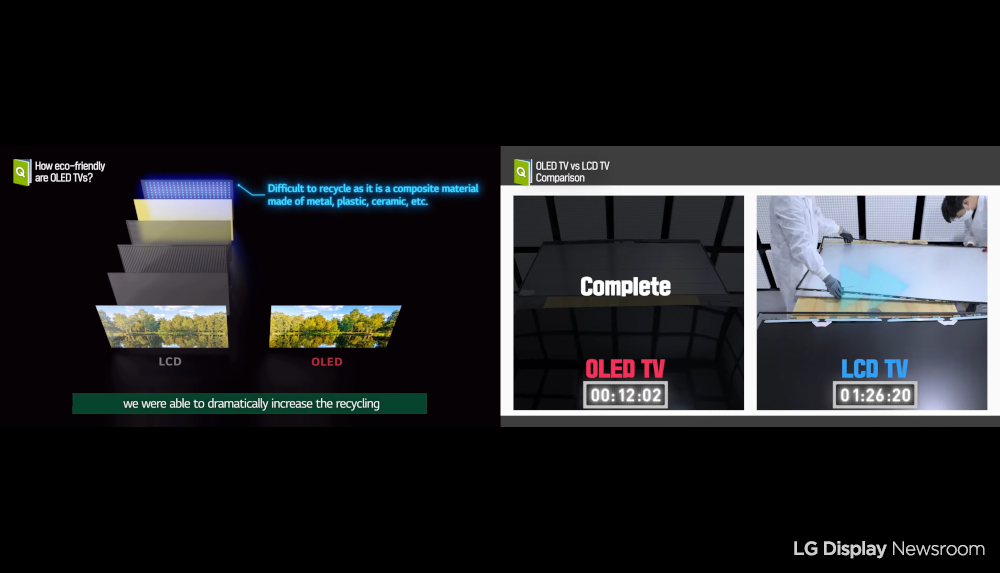In a world continuously searching for ways to protect the environment, LG Display’s OLED technology stands out as an eco-friendly solution. The company’s OLED TV panels have been certified by Swiss-based inspection and certification company SGS as an Eco-Product for four years running, meaning they are allowed to use ‘ECO’ labels.
With sales of IT devices, as well as TVs, soaring during the COVID-19 pandemic, the importance of eco-friendly recognition has also grown. The particular areas in which OLED TVs demonstrate eco-friendliness are high recyclability, reducing hazardous substances, and lowering indoor air pollutants.

Much less plastic, more recycling
LG Display recently showed OLED’s high recyclability by demonstrating a side-by-side breakdown of OLED and LCD TVs, with the latter representing the most common display technology among TVs today. While the disassembly of an OLED panel took just 12 seconds, the LCD counterpart required two minutes longer.

The simple reason for this demonstration was to show how many more parts an LCD TV has compared with an OLED panel, which features an advanced self-emissive structure. LCD TVs have to be backlit and contain multiple optical sheets that are largely made up of hard-to-recycle composite materials, which in turn need to be buried or burned when they are discarded.
Because OLED TVs only require a thin panel and a back cover, they have a recyclability rate of 92.7%, according to the video linked above. To offer further perspective, as this Korean report also elaborated, OLEDs need so little plastic that a 65-inch OLED panel weighs just 0.43 kg. Conversely an LCD alternative of the same size was shown to weigh 5.2 kg. With cumulative OLED panel shipments adding up to around 15 million as of the first quarter of this year, at that point LG Display had saved 71,550 tons of plastic by making OLEDs.
‘Working tirelessly’ to protect consumers
Another significant eco-friendly benefit provided by OLED TVs is that they are free from harmful substances such as cadmium and indium phosphide. These are classified as Group 1 and Group 2 carcinogens respectively by the International Agency for Research on Cancer (IARC) under the World Health Organization.
The reason why such substances are used by other displays is because they boost their lower color gamut. OLED’s exceptional picture quality is produced in a very different way – unlike other displays, OLED TVs are self-emissive and have no need for a backlight.
Less plastic additionally means less volatile organic compounds (VOCs), which can hurt consumers by affecting indoor air quality. Typically emitted from plastics and product finishing materials, VOCs can cause eye and skin irritation along with breathing difficulties. As also confirmed in the video linked above, OLED TVs release 50% less VOCs than LCD counterparts.
“LG Display has worked tirelessly to ensure you’re protected from such harmful substances,” explains Yoo Jang-jin, Research Fellow from LG Display’s Picture Quality Development Department in another video series titled All about OLED. “Regulations on harmful substances are becoming much stricter as demand for eco-friendly products rises sharply across the globe. LG Display’s OLED determines the direction of future display products through the company’s ‘green’ mindset and comprehensive action plan because we think about future generations.”









